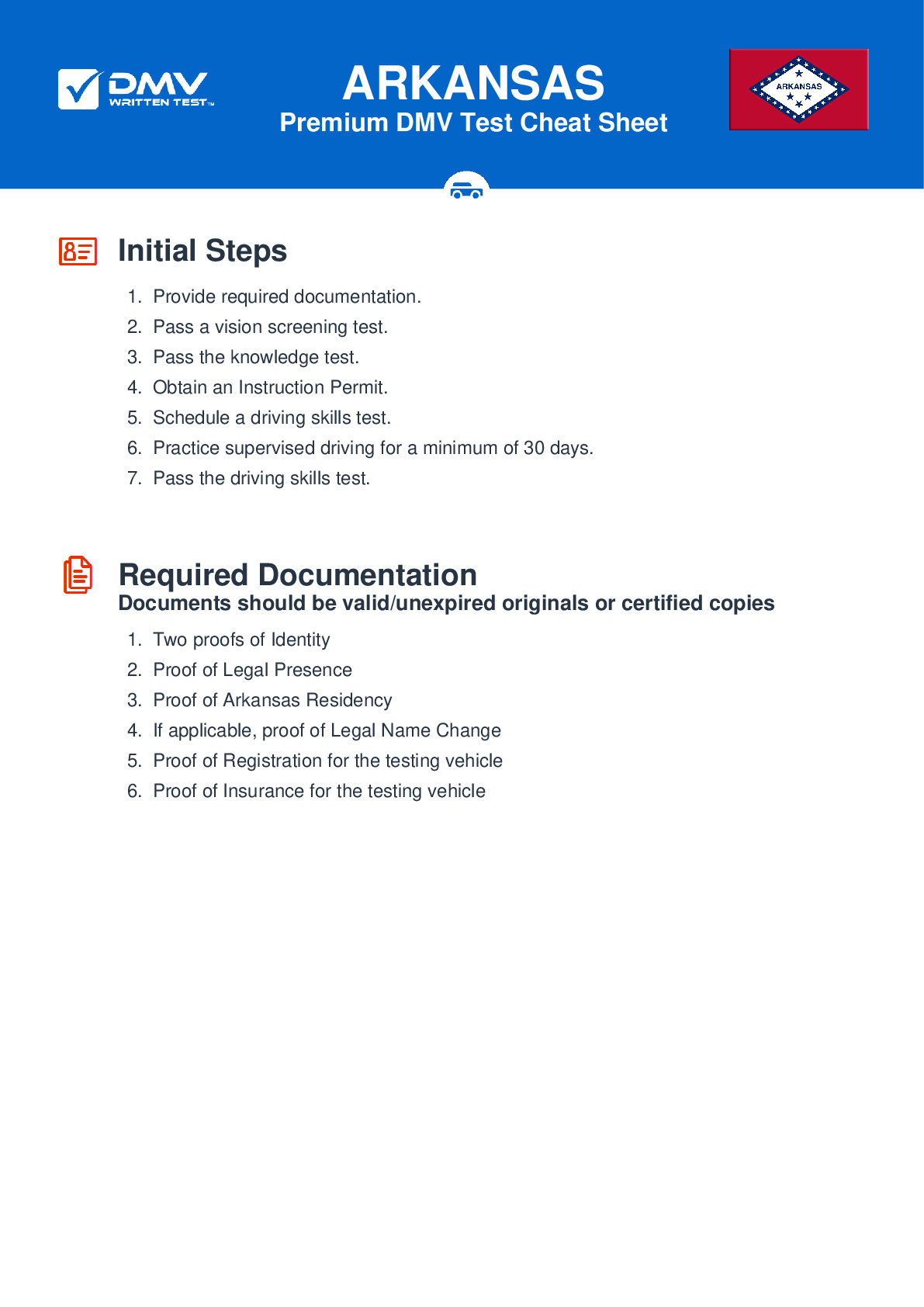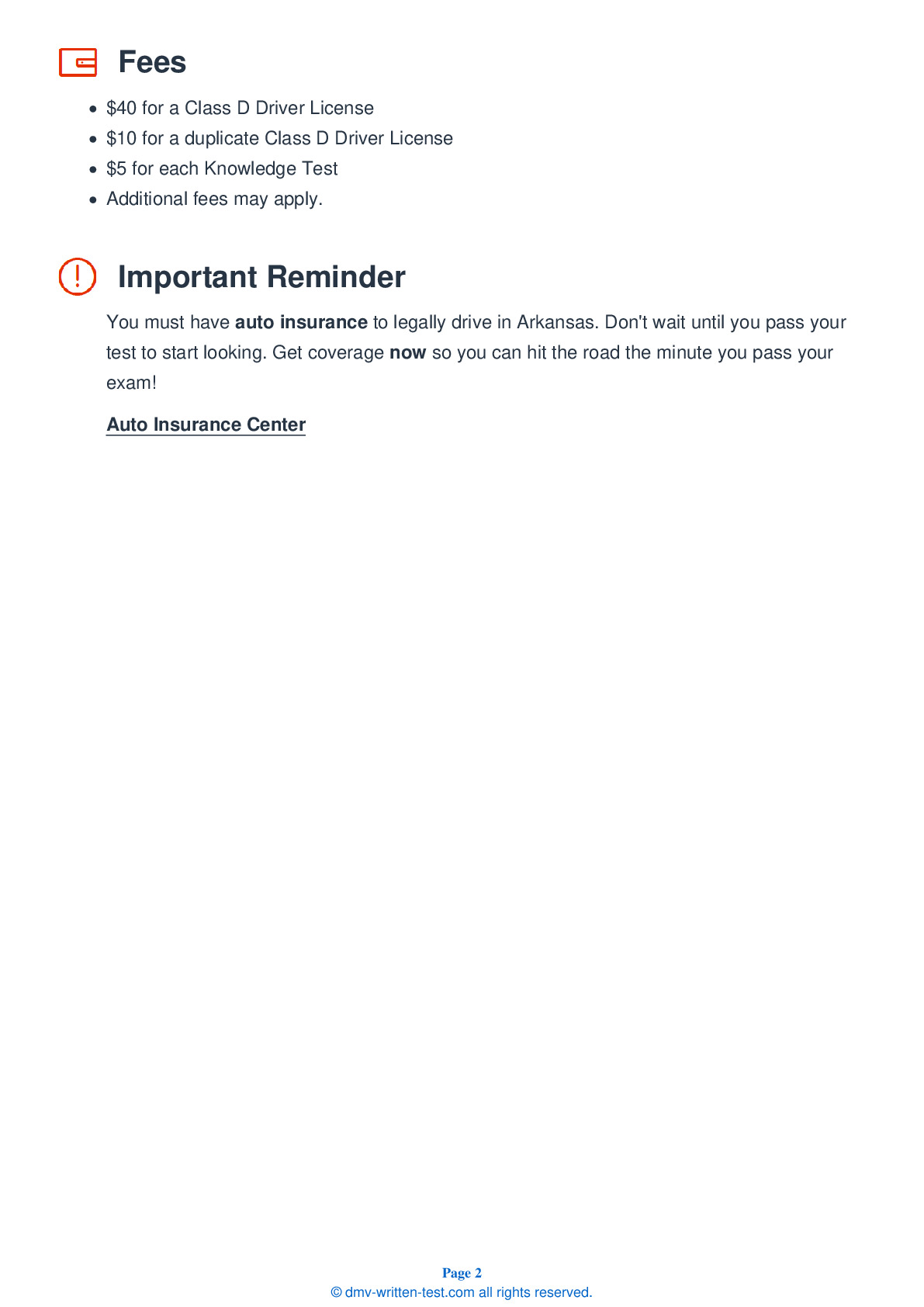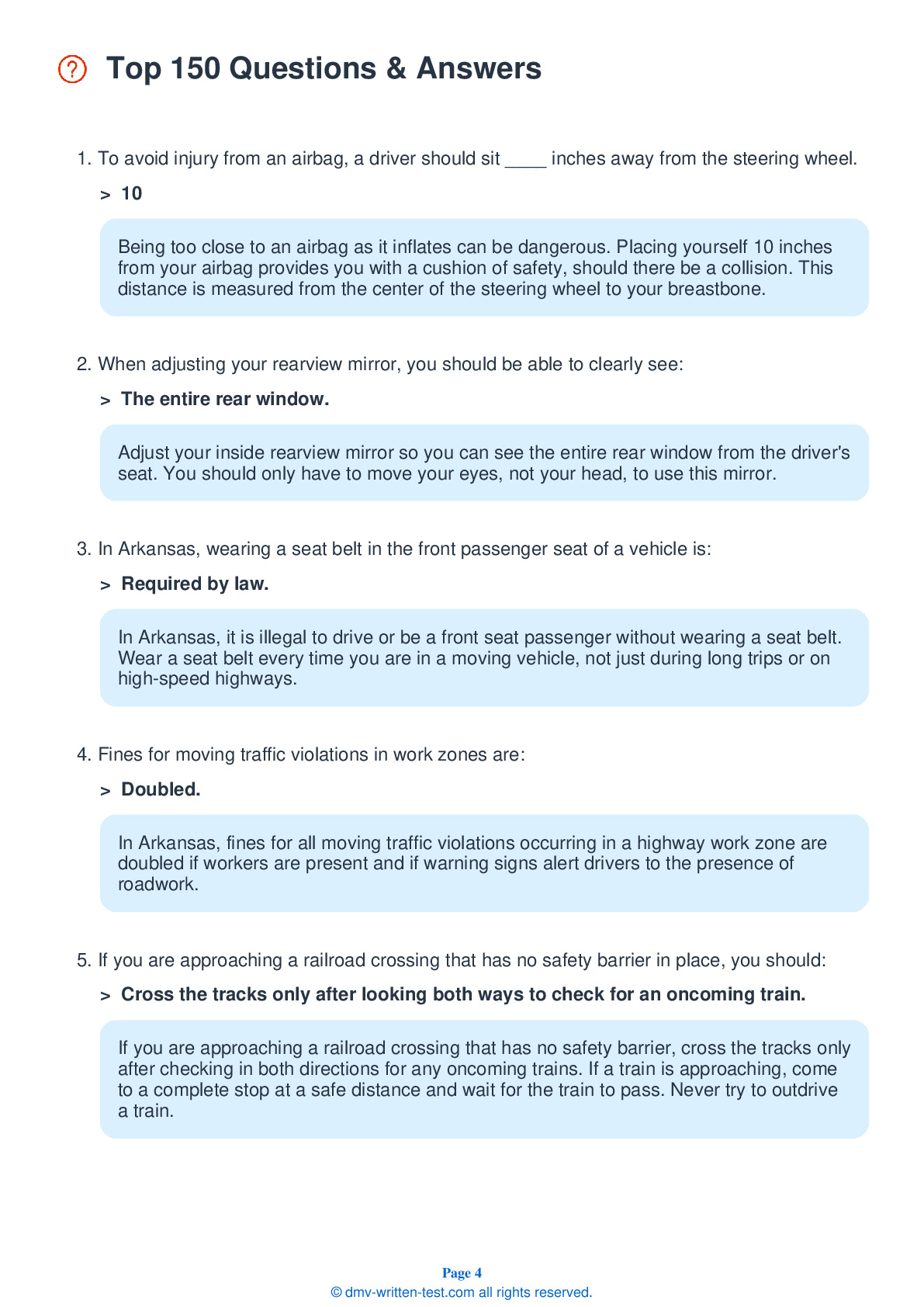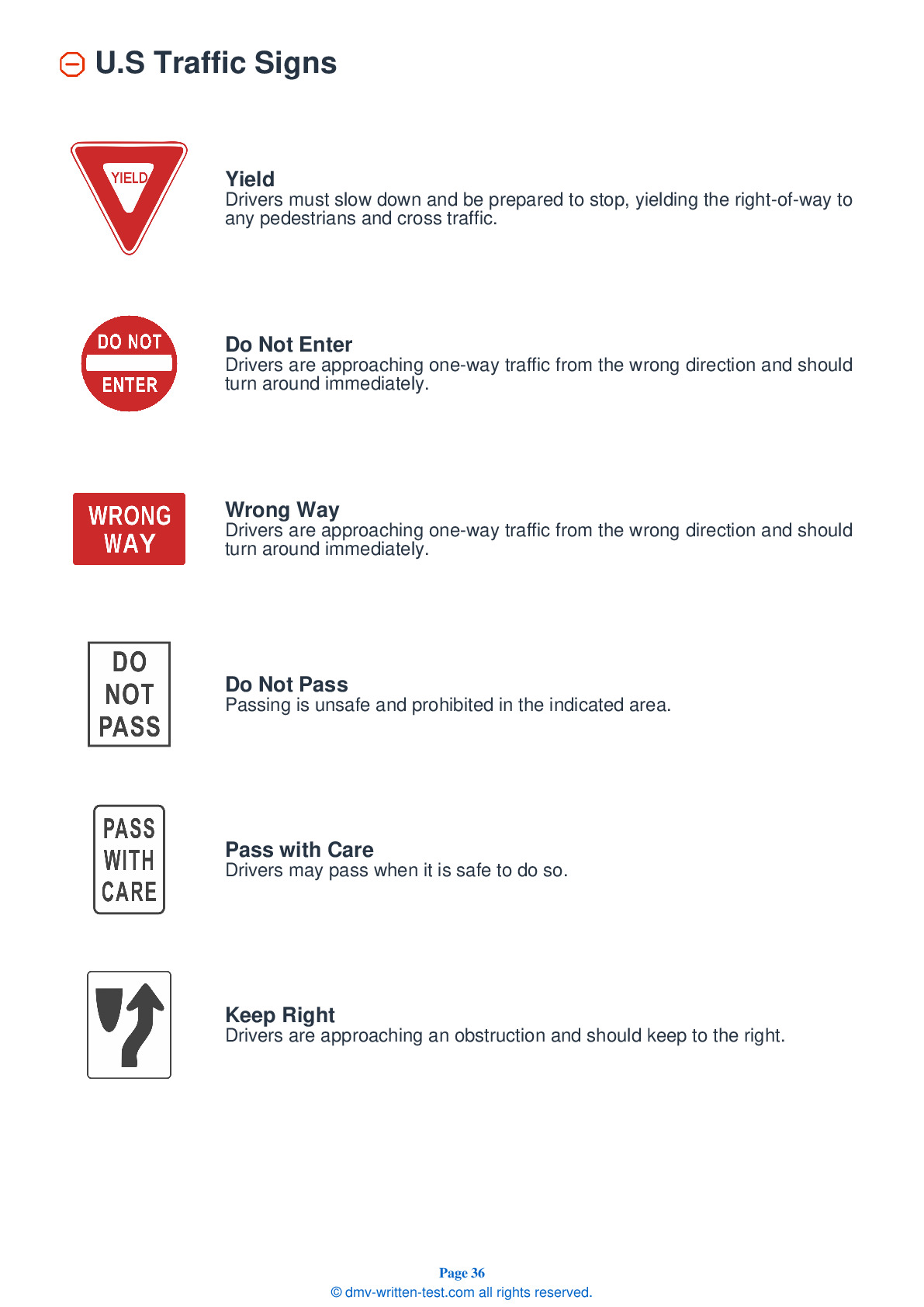2025 Arkansas Permit Test 22
The following questions are from real DMV written tests. These are some of the actual permit questions you will face in Arkansas. Each permit practice test question has three answer choices. Select one answer for each question and select "grade this section." You can find this button at the bottom of the drivers license quiz. For a complete list of questions and answers for Arkansas please visit https://cheat-sheets.dmv-written-test.com/en/arkansas/car.
Number of Tests
Number of Question
Passing Score
17. When changing lanes, you should never:
Explanation
Before changing lanes, check for drivers trying to pass you who may be trying to enter the same lane as you. Look over your shoulder to check your blind spot. You should never attempt to pass or otherwise change lanes in an intersection.
18. What does a traffic signal with a yellow left arrow indicate?
Explanation
When a protected turn arrow changes from green to yellow, drivers must prepare to yield to oncoming traffic. A yellow arrow indicates that the protected left turn is ending.
19. This sign means:
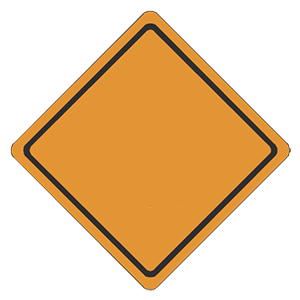
Explanation
Orange, diamond-shaped signs are used to mark construction, maintenance, survey, and utility work areas. These signs help direct drivers and pedestrians safely through dangerous zones. Fines for traffic convictions may double in areas marked by these signs.
20. In Arkansas, shared center lanes can be used:
Explanation
A shared center turn lane is marked on each side with a solid yellow line next to a dashed yellow line. Shared center lanes are reserved for drivers making left turns and can be used by vehicles traveling in either direction. In Arkansas, it is permissible for a vehicle making a left turn from a street or driveway to utilize a center lane as part of the maneuver to gain access to or merge into traffic lanes. It is not permissible to use the center lane as an acceleration lane.
21. You should not use your horn:
Explanation
When driving near a blind pedestrian, using your horn may be dangerous. Yield to the pedestrian and proceed when it is safe to do so.
22. To help avoid skidding on slippery surfaces, you should:
Explanation
Slow down before you enter a curve because you do not know what may be ahead. Braking on a curve may cause you to skid.
23. To avoid traction loss on wet roads, you should:
Explanation
To prevent hydroplaning, lower your speed in response to wet roads and keep your tires in good condition. If you detect a loss of control, take your foot off the gas, do not apply the brakes, maintain the direction of the vehicle, and allow the vehicle to slow to a manageable speed.
24. Remove all snow, frost, and ice from:
Explanation
It is important that you are able to see clearly through all of your vehicle's windows, including the windshield. Remove all snow, ice, and frost from your vehicle's windows and mirrors before you start to drive.
25. When approaching a person who is crossing the street while using a white cane or guide dog, you should:
Explanation
